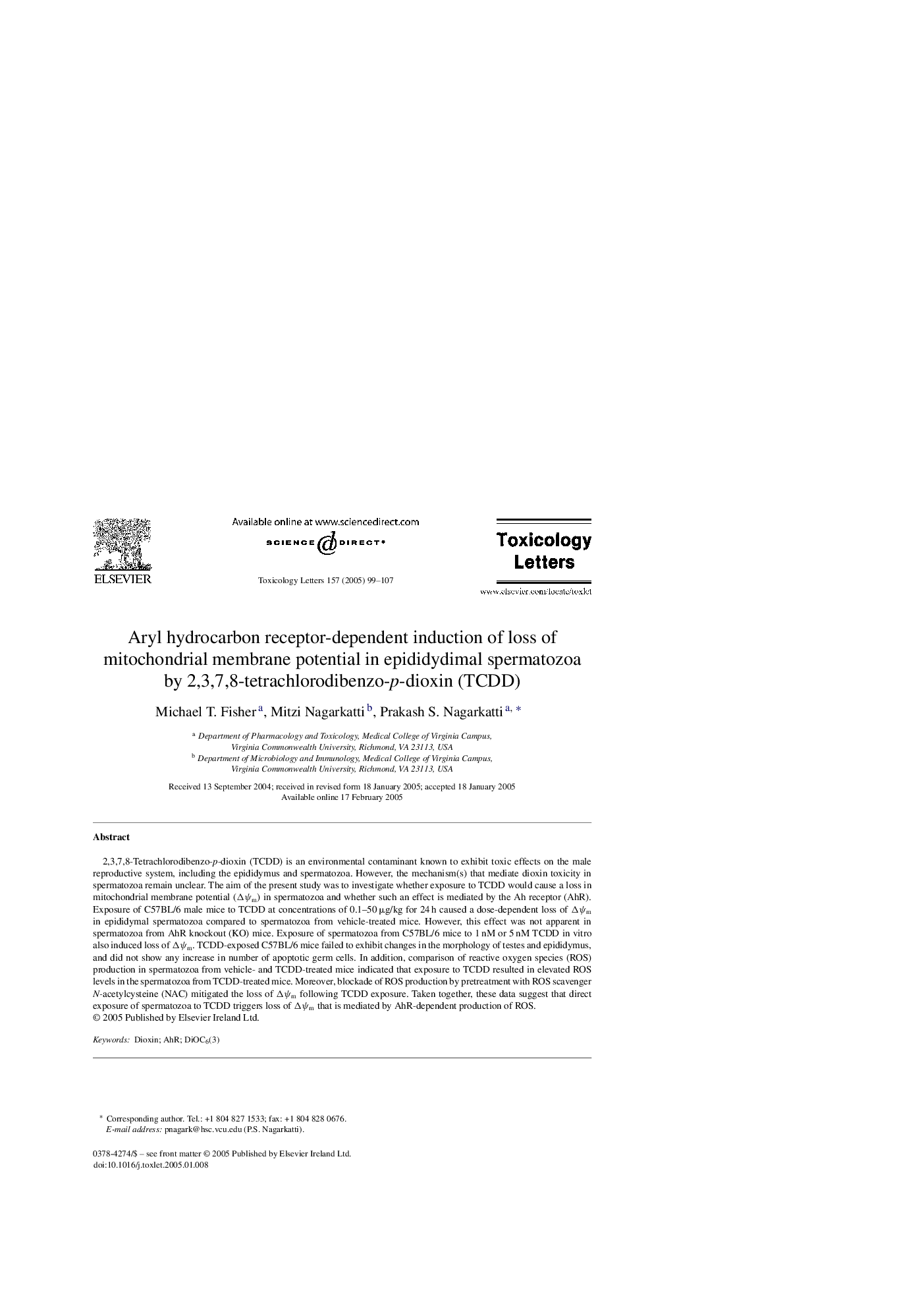| Article ID | Journal | Published Year | Pages | File Type |
|---|---|---|---|---|
| 9036594 | Toxicology Letters | 2005 | 9 Pages |
Abstract
2,3,7,8-Tetrachlorodibenzo-p-dioxin (TCDD) is an environmental contaminant known to exhibit toxic effects on the male reproductive system, including the epididymus and spermatozoa. However, the mechanism(s) that mediate dioxin toxicity in spermatozoa remain unclear. The aim of the present study was to investigate whether exposure to TCDD would cause a loss in mitochondrial membrane potential (ÎÏm) in spermatozoa and whether such an effect is mediated by the Ah receptor (AhR). Exposure of C57BL/6 male mice to TCDD at concentrations of 0.1-50 μg/kg for 24 h caused a dose-dependent loss of ÎÏm in epididymal spermatozoa compared to spermatozoa from vehicle-treated mice. However, this effect was not apparent in spermatozoa from AhR knockout (KO) mice. Exposure of spermatozoa from C57BL/6 mice to 1 nM or 5 nM TCDD in vitro also induced loss of ÎÏm. TCDD-exposed C57BL/6 mice failed to exhibit changes in the morphology of testes and epididymus, and did not show any increase in number of apoptotic germ cells. In addition, comparison of reactive oxygen species (ROS) production in spermatozoa from vehicle- and TCDD-treated mice indicated that exposure to TCDD resulted in elevated ROS levels in the spermatozoa from TCDD-treated mice. Moreover, blockade of ROS production by pretreatment with ROS scavenger N-acetylcysteine (NAC) mitigated the loss of ÎÏm following TCDD exposure. Taken together, these data suggest that direct exposure of spermatozoa to TCDD triggers loss of ÎÏm that is mediated by AhR-dependent production of ROS.
Related Topics
Life Sciences
Environmental Science
Health, Toxicology and Mutagenesis
Authors
Michael T. Fisher, Mitzi Nagarkatti, Prakash S. Nagarkatti,
